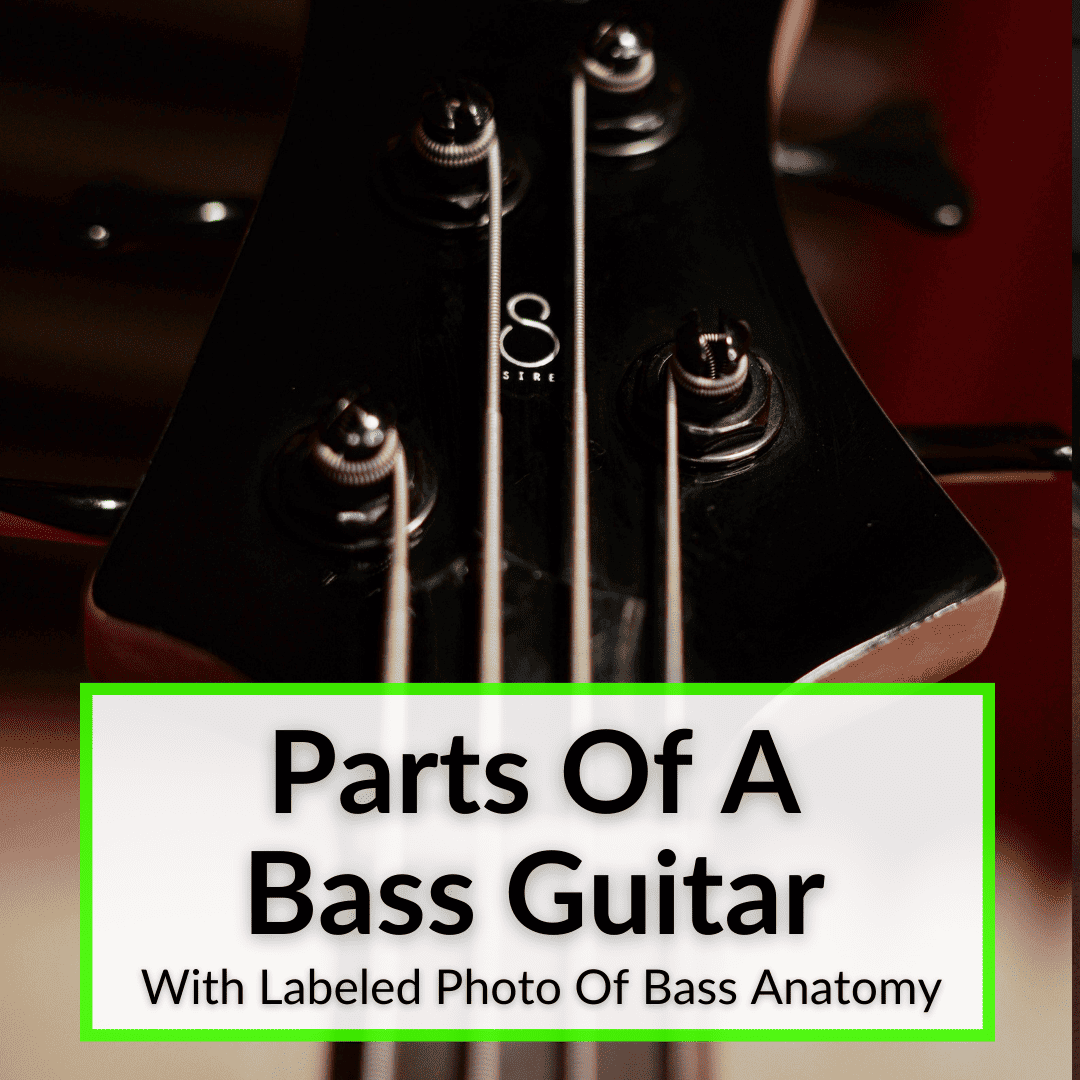 Is it necessary to know the parts of a bass guitar?
Is it necessary to know the parts of a bass guitar?
Technically no.
You can learn to play a bass without knowing the name of a single part of its anatomy.
But do you really want that?
For one, you won’t be able to talk about the instrument. Or understand what an instructor is talking about.
Plus, knowing the bass guitar anatomy helps in understanding how one works.
So keep reading to learn all about the different parts of a bass. We will cover everything you need to know.
Table of Contents
Parts Of A Bass Guitar
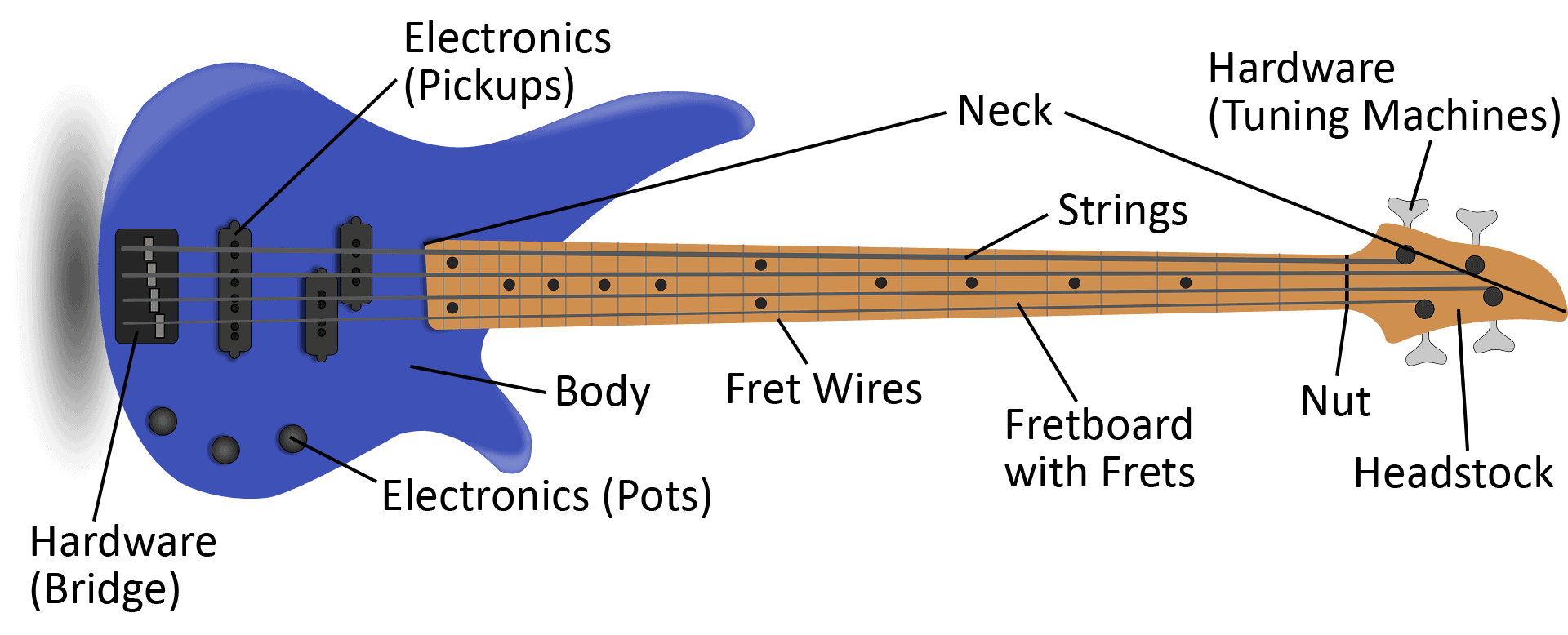
As mentioned, and as you can see from the photo of the bass guitar labeled above, a bass does not have a ton of parts. Even the electric version is still a relatively simple instrument. Let’s take a closer look at each of the parts and what they do.
Body
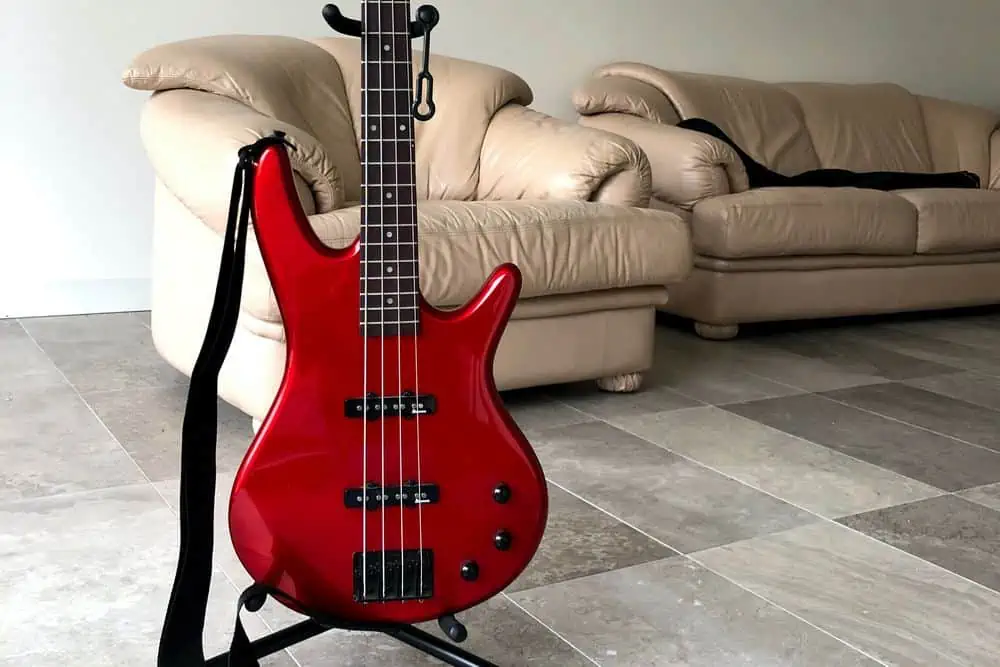
The main part of your bass guitar is its body. This is the centerpiece that holds everything together and where all the other parts meet. It’s also where you pick the strings, rest your arm, and adjust the controls.
Most models on the market are solid-body bass guitars. This means that the body is fashioned from a solid piece of wood with no hollowed-out parts in it.
There are some semi-hollow-body and hollow-body bass guitars on the market, but they are not nearly as common.
Since Fender has set the standard for conventional bass guitars, a lot of models are designed according to their old Precision and Jazz bass models. As a result, most bodies have a double-cutaway design.
You also need to know that, when horizontally divided, you have bass and treble sides of the body. Then there’s vertical division on the upper and lower bout. The upper bout is closer to the neck and the lower bout is the larger end of the body.
Neck
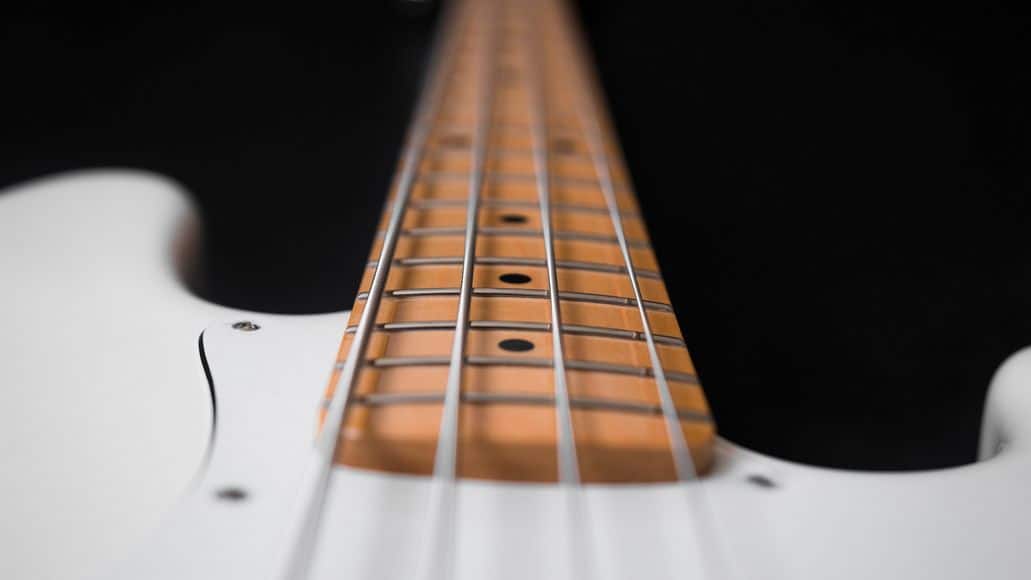
The neck is the upward extension of the body. These days, most basses have a bolt-on construction, meaning that the neck is screwed into the body, along with a specially designed joint.
Other options include a set neck, where the neck is glued, and the so-called neck-through design, which means that a solid piece of wood goes through the body of the bass. These two options are usually reserved for more expensive basses.
In most cases, the main part of the neck is one piece of wood, along with the headstock. The fretboard is not part of this. It is a separate piece of wood.
The length of the neck and the overall design of the body can define the bass guitar scale length. The scale length is the distance between the nut and the place where the strings touch the saddles on the bridge, i.e. the parts of the strings that vibrate.
Fretboard Or Fingerboard
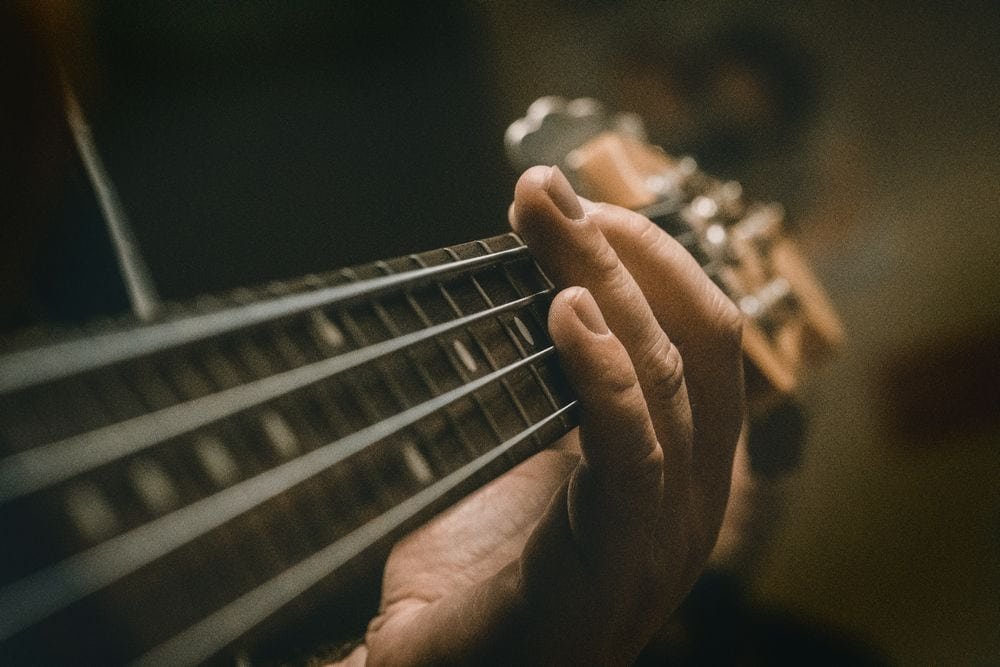
While we’re at it, the neck also contains the fretboard, or fingerboard. It’s an additional long piece of wood resting on the neck, facing outwards.
This is where you press down on the strings, shortening their effective length, and changing their individual pitch. Fingerboards can be fretted and fretless, but most basses come with frets.
In some rare cases, fretboards on bass guitars can have scalloped frets, meaning that the wood is indented in between two fret wires. Billy Sheehan uses basses with some scalloped higher frets.
Both types of frets are a pain to clean. I hate going from one fret to the next with a tiny brush or cotton swab when cleaning my bass. It’s tedious. To me, that is the biggest advantage of fretless bass guitars.
That said, the fretboard is the part of the bass that gets the dirtiest the fastest, along with the strings. Keeping the fingerboard clean is an essential part of bass guitar maintenance.
Frets And Fret Wire
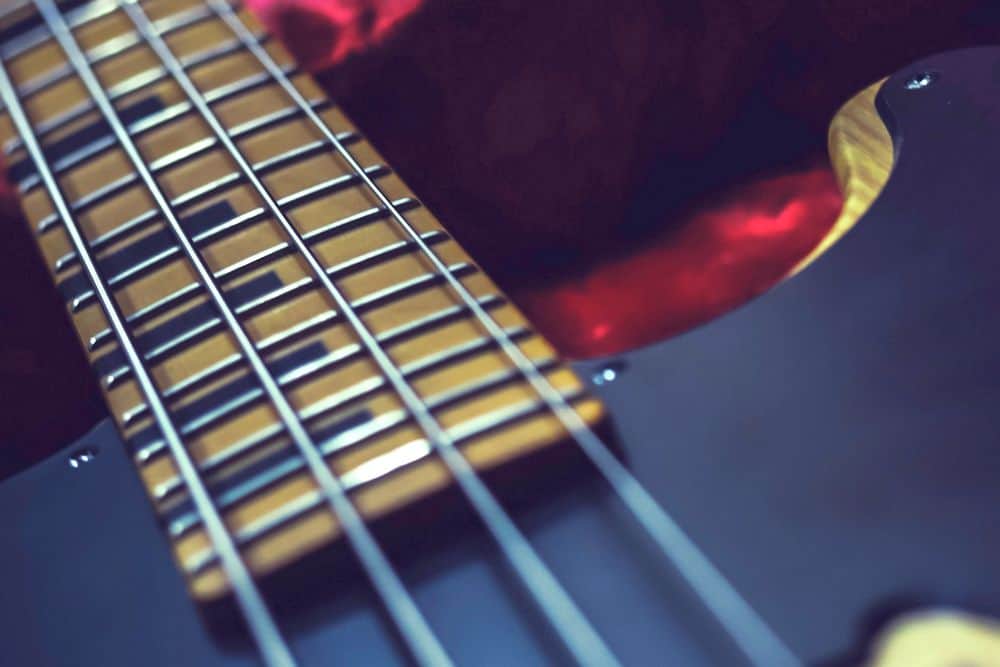
Each fret on a bass guitar is defined with fret wire. This is a specialized wire that’s embedded into the fretboard. In almost all cases, one fret equals one semitone.
The number of frets depends on the bass model. They usually come with 21, 22, or 24 frets. But there are models with 20 frets.
In some rare cases, you’ll find bass guitars with over 24 frets. Fretless basses have no fret wire. The pitch is defined solely by where you press the string on the fingerboard, similar to a violin. You need a good ear to play a fretless bass.
Nut
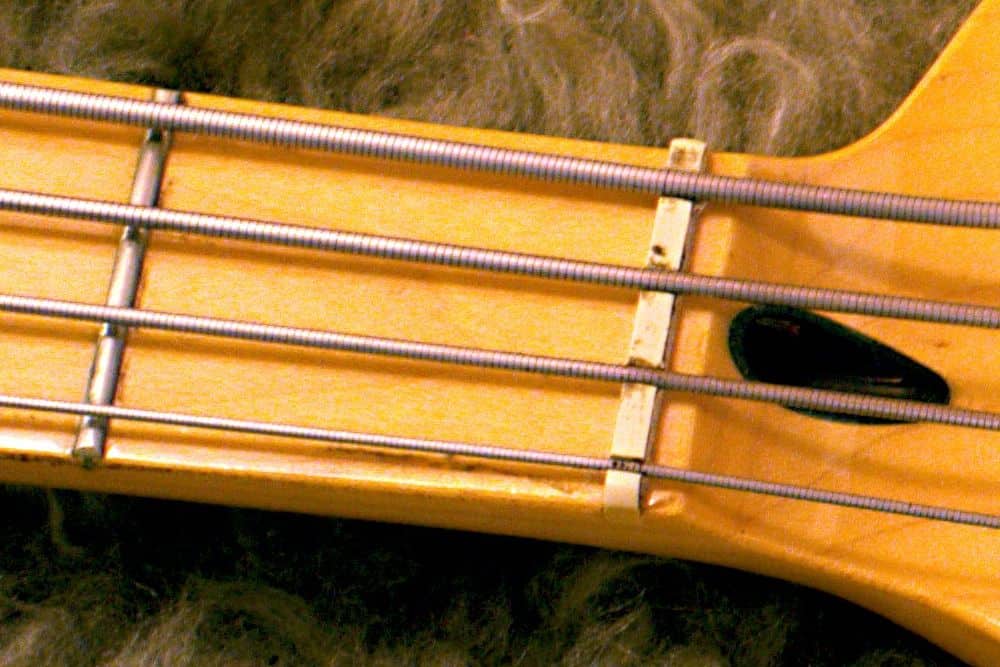
The nut is located right before the beginning of the fretboard. Made from a hard material like plastic, bone, or brass, it comes with indents for individual strings.
It marks the beginning of the usable part of the string. In effect, it serves as the zero fret, although the term “zero fret” usually refers to something else.
Headstock
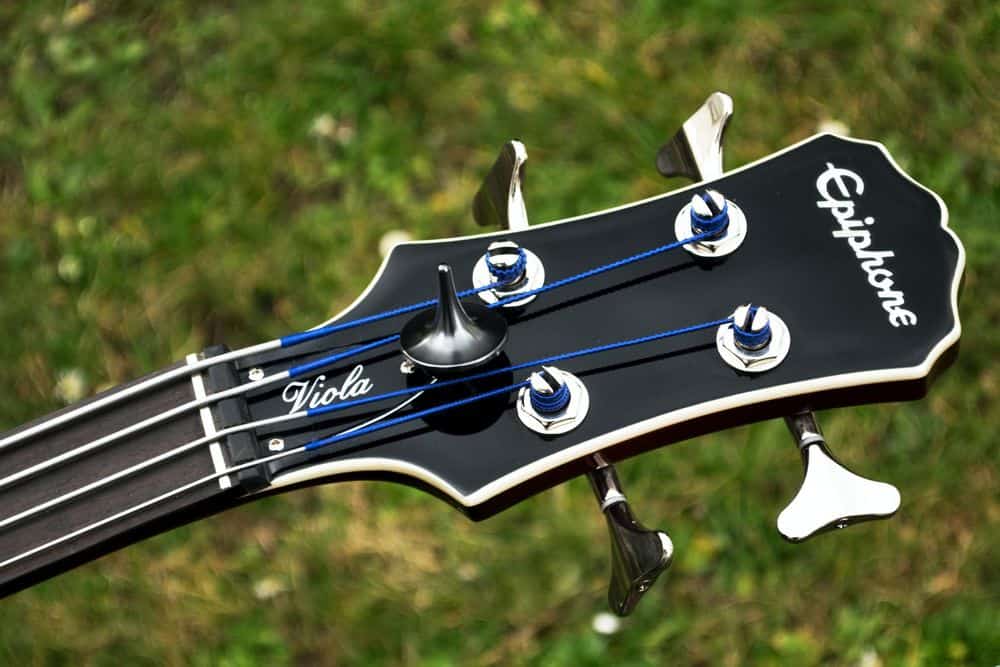
The headstock is located at the end of the neck, opposing the body. Technically, it’s part of the neck, but is also defined as a separate section.
This is where the tuning machines, also known as tuning pegs, are located. And it’s where the ends of strings are located and rolled up around the tuning machines’ cylinders.
Hardware
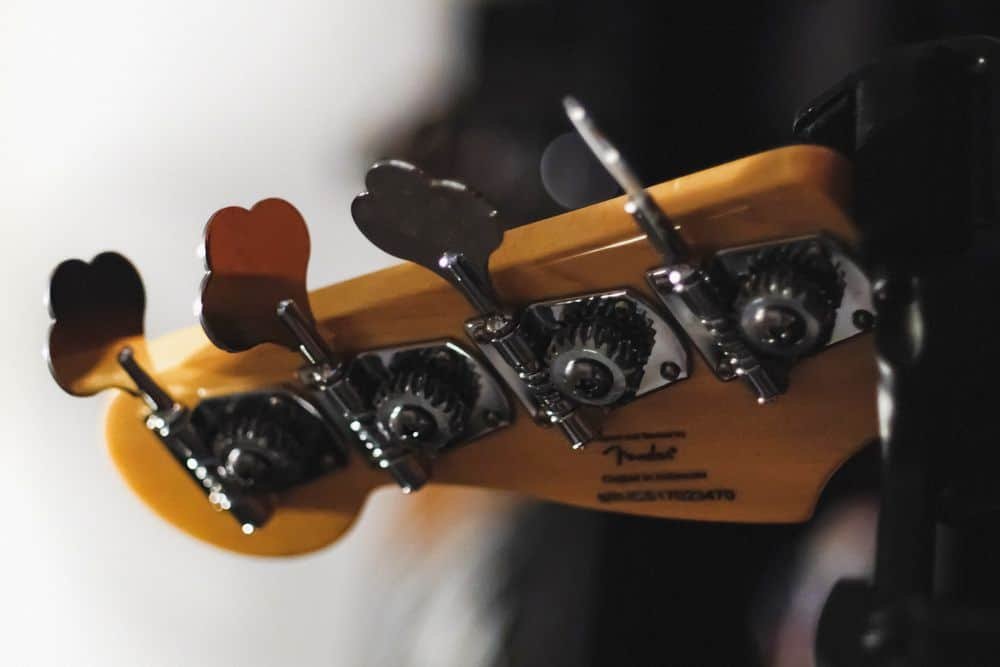
Hardware refers to all the functional metal parts on your bass guitar. Most of them serve to hold the strings on the neck and the body. The main components are tuning machines on the headstock and the bridge with saddles on the lower bout of the body.
Together, they hold the strings on their opposite ends. You use the tuning machines to adjust and correct the pitch of individual strings.
The bridge holds the strings on the body. The saddles on the bridge allow the strings to rest, just like the nut does in between the headstock and the fingerboard.
You can also define strap pins as hardware on the bass. These are on the two opposing parts of the body, screwed in tightly. You use them to attach the ends of your strap.
Truss Rod
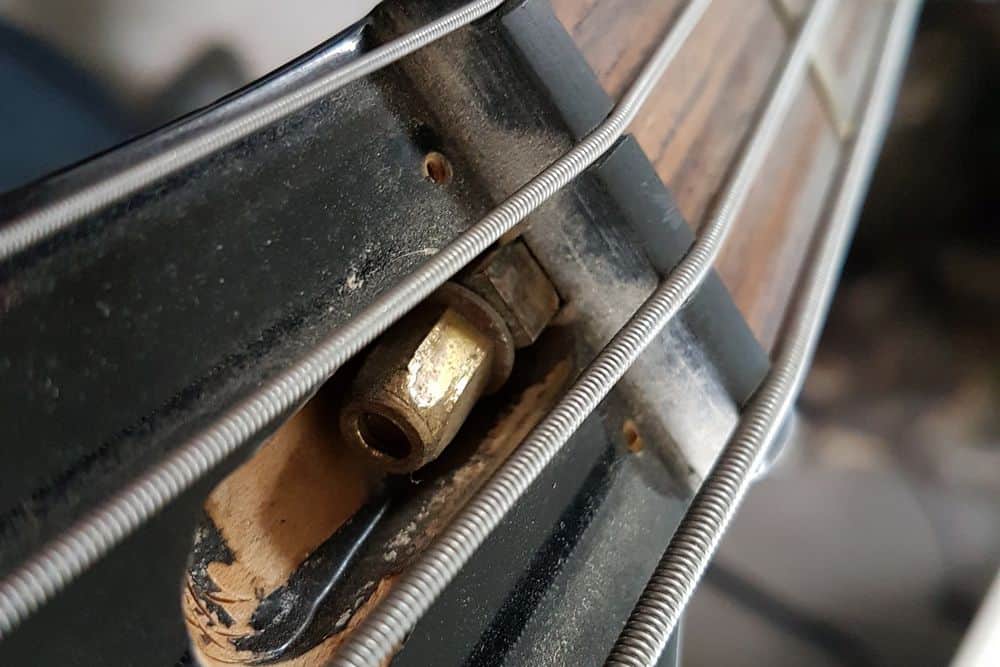
The truss rod is a long adjustable metal rod that goes through the neck. You can access one end of the truss rod. It can be either end depending on the bass in question, either at the headstock or where the neck meets the body.
You can use the truss rod to adjust the neck relief. It essentially lets you adjust the concave or convex bow of the neck. It will change over time due to string tension and other factors, so you will need to adjust it occasionally.
Electronics
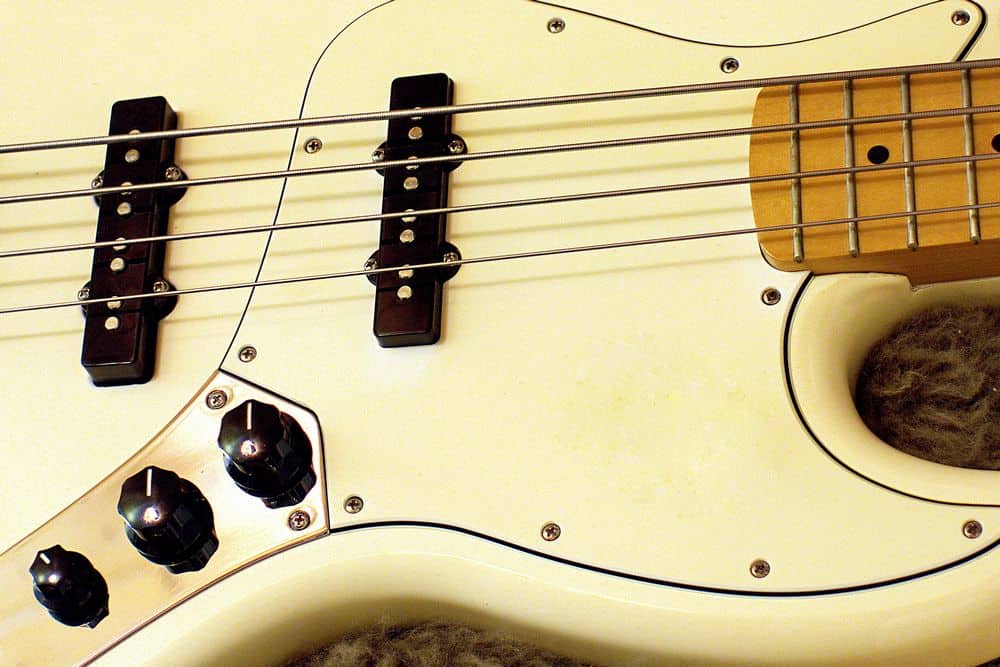
The electronics of your bass guitar include pickups, pots, switches, and wires connecting these components.
Basses can also come with active electronics, meaning that there’s a battery-powered preamp within the system. If your bass comes with active electronics, there should also be a battery compartment for a standard 9-volt battery.
The pickups act like sensors that pick up string vibration and translate it into electrical signals. Pickups are magnetic in most cases. Some acoustic bass guitars come with piezo sensors.
Potentiometers adjust volume and tone (amount of high-end frequencies in your output). If there’s more than one pickup on your bass, you’ll have individual volume controls for each. Some basses may come with switches that select different pickup combinations.
All the wiring is located within the body of your bass guitar. It is covered with hard plastic covers. Some covers are top-mounted, like on Fender-style basses.
Some can be on the back, if the bass guitar’s electronics compartment is located on the back side of the body. Electronics compartments should also have some form of shielding, either as a coating or as an adhesive shielding tape.
Bass Guitar Anatomy: Final Thoughts
And that’s it. Like I said, bass guitars are not overly complicated. All it took was this short article to cover all the parts of a bass guitar and their functions.
Of course, there is some variation in how different bass guitars are shaped and how they look, but they all still have the same parts.
An acoustic bass guitar does not have any electronics, of course (unless it is an acoustic electric) and it has a hollow body cavity to produce sound, but otherwise it has the same components as electric bass guitars.
Leave a Reply